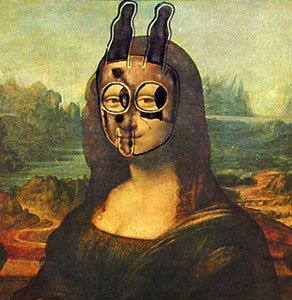I wrote this workshop plan for last month's meeting, which went well, but would have gone better if more than two kids had shown up. It's something I'd like to try again in the future with a larger group of students, maybe at the library.
current events response collage
goal
To make a collage out of images from key current events in the news, and text/images taken from magazines and newspapers that represent your own community.
objectives
To become informed about the protests in Egypt and Wisconsin; to understand the reasons why people in these places are protesting
To identify common problems between those places and one's own community
To review collage work by other artists through history
materials
Scissors
Pens
Markers and/or Colored pencils
Photos from Cairo, Tunis, and Madison
Local newspapers and magazines
Glue sticks
Blank paper
Information sheets about the events Cairo, Egypt and Madison, WI: I compiled some quotes from newspapers that summed up the reasons behind the protests in these places. I bolded key concepts in the excerpts.
introduction
First, gauge students' prior knowledge of the events in Cairo and Madison. Then pass out the information sheets you created about each place.
Have students take turns reading excerpts from the sheets. I won't post what I wrote on the sheets I made because they quote from other sources, but here are the words and phrases that I bolded on each sheet (the main concepts I wanted students to take away from the excerpts):
Egypt
the popular protest was peaceful and resilient
police brutality
lack of free elections and freedom of speech
corruption
high unemployment
food price inflation
low minimum wages
labor unions played an integral part in the protests
Wisconsin
cutting benefits for union workers
doing away with unions' ability to negotiate
$137 million budget shortfall
Discuss with students why people in both of these very different parts of the world were protesting. Here are some questions to help guide the discussion:
- Why are people unhappy in Egpyt? What about in Madison?
- Are people in those places angry about any of the same things?
- What ways, aside from public protest or direct action, are there for ordinary people to stop bad things from happening in their communities?
- Why do you think people in these places decided to protest instead?
- Have you ever seen a protest happening in Baltimore? Do you know what the protest was about? What were people doing? Were they being violent or peaceful? What do you remember thinking or wondering at the time?
- Think of the problems that people in Wisconsin and Egypt were angry about. Do you see any of these problems playing out in your own community or in Baltimore? What about any other similarities between Baltimore and those other places?
Next, introduce the collage activity. Find out what students know about collage already--ask about any previous experience they have making collage, and if there is a particular collage artist that they like. Next, show some examples of collage work. I brought in some books from the MICA library, but you can also find examples from the internet, like these:
Wangechi Mutu, Ghouls On My Back Celebrate Murder (2003). Source: Saatchi Gallery
Wangechi Mutu, Adult Female Sexual Organs (2005). Source: Saatchi Gallery
Ray Johnson, Mona Lisa Bunny. Source: Eggplant
Ask students to identify which parts of each piece are collaged and guess how they got on there. Ask them why they think the artists chose to put those collaged elements on there—what is the overall effect? What happens in the mind of the viewer when an artist puts two things next to each other? What do you think each piece trying to say? What did the artist do to convey that message to you?
activity
Students make a collage out of photos from the protests in Egypt and Wisconsin, and from words/images from local newspapers and magazines (Baltimore Sun, Urbanite Magazine, etc).
Ask students to start with a large photo from one of the protests
Demonstrate that they can add to the photo with pen, or cut pieces out of the photo and put them on a new sheet of paper entirely
Ask students to find elements from the local publications that highlight the similar problems that Baltimore and these other parts of the world face—words, letters, or images
Remind students that they have freedom to form their own words and images from things they find and assemble
follow-up
Lay each final piece out and ask the class to spend a minute or two looking at the different collages. Ask if anybody would like to share why they chose certain elements for their pieces.- If we showed somebody your collage, and they didn't know anything about problems facing your community, what do you think they would guess were some problems, based on your collage?
- What happens when you juxtapose two very different things in the same piece of artwork? What effect does it have on the viewer? Does it highlight similarities, reveal contrast, or both?
- Do you think these collages are successful at showing similarities between Baltimore and these other parts of the world? Why or why not?
Teen participants working on collages.





